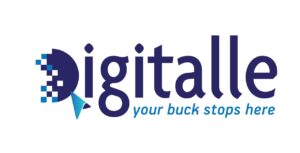The budget season is here, the Finance Minister Ms Nirmala Sitaraman unveils the government’s spending plans, and everyone waits with curious breath to see how it might impact their wallets. This year, with the Lok Sabha elections looming, expectations are even higher. One area buzzing with anticipation is income tax. Should you stick with the familiar “Old regime” or dive into the “New regime“?
Let us break it down:
Old Regime: The Tried and Tested
In 2020, the government introduced a new, simplified tax regime along with the existing old or classic regime. While the new regime promised ease and lower tax rates, the old regime continued offering various deductions and exemptions. This created confusion, leaving many taxpayers wondering which path to take.
The old regime was the traditional system that was tried and tested for many decades. It offers a wider range of deductions and exemptions, allowing you to lower your taxable income. Think investments, housing loan interest, medical expenses, and charitable donations – you name it, there is probably a deduction for it. But here is the catch:
- Complexity: Filling out your return feels like navigating a maze. With all those deductions, keeping track and claiming them correctly can be a headache.
- Limited appeal: The higher your income, the less attractive the old regime becomes. The benefits of deductions taper off, often negating the complexity.

New Regime: The Simplified Stream
Introduced in 2020, the new regime promises convenience with its lower tax rates and a standard deduction of ₹50,000. No more hunting for receipts and paperwork!
However, there is a flip side:
- Fewer deductions: Say goodbye to most exemptions you enjoyed under the old regime. This can significantly impact your tax liability if you have substantial investments or expenses.
- Jury’s still out: While simpler, the new regime might not always be more tax-efficient for everyone. It depends on your individual income and investment profile.
Which Regime is Right for You?
There is no one-size-fits-all answer. It depends on your income, investment habits, and the deductions you typically claim.
But here is a quick guide:
Choose the Old Regime if:
- You have significant deductions and exemptions to claim (totaling more than ₹50,000).
- You invest heavily in tax-saving instruments.
- You are comfortable with complex calculations and record-keeping.
Choose the New Regime if:
- You have minimal deductions and exemptions.
- You prefer simplicity and ease of filing.
- You are in a lower income bracket (up to ₹15 lakh).
Budget 2024 Expectations: What Could Change?
The upcoming Budget might tweak both regimes. Here is what to watch out for:
- Increased standard deduction: This would make the new regime more attractive for those with moderate deductions.
- Tweaked tax slabs: Changes in tax rates or slabs could alter the appeal of each regime for different income groups.
- Targeted exemptions: The government might introduce specific exemptions under the new regime to encourage certain investments or behaviours.
Remember: Before making your choice, do the math! Use online calculators or consult a tax advisor to compare your tax liability under both regimes based on your income and deductions.
Final Thoughts:
Budget 2024 might bring changes to both the old and new tax regimes. While the convenience of the new regime is tempting, do not blindly jump ship. Analyse your financial situation and understand the implications before making your choice. Remember, the right regime can save you significant money in the long run!
Stay tuned! As Budget Day approaches, keep an eye out for official announcements and expert analyses to refine your decision. Happy tax planning!
